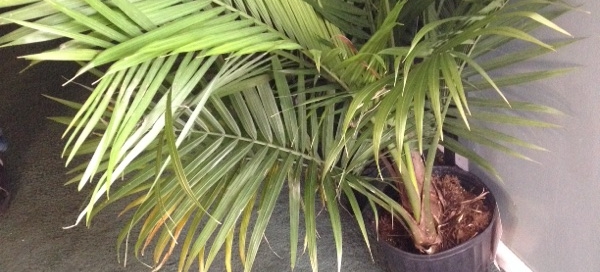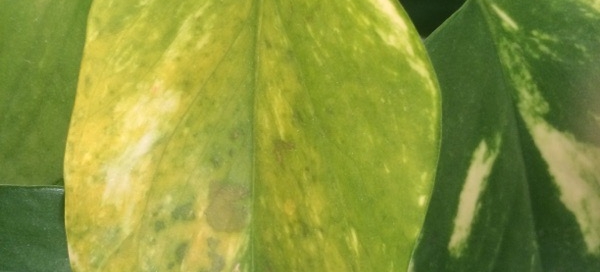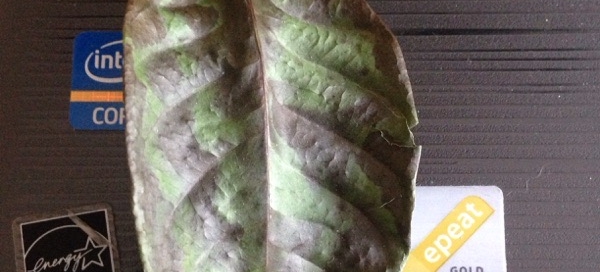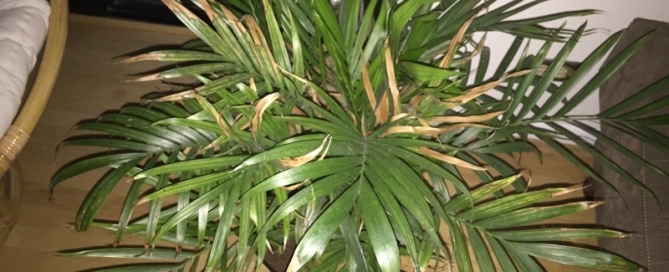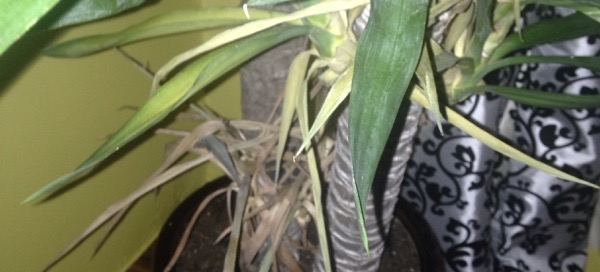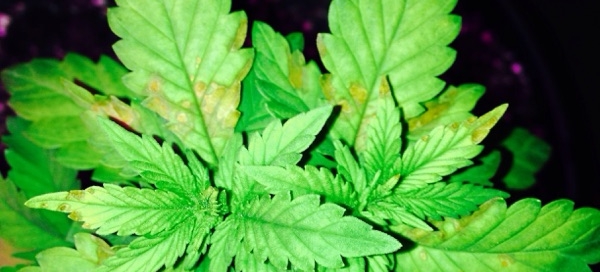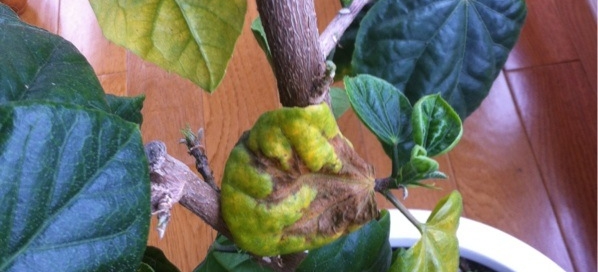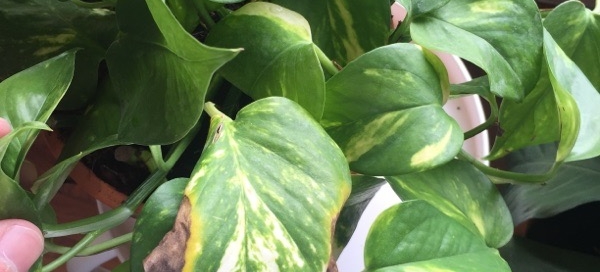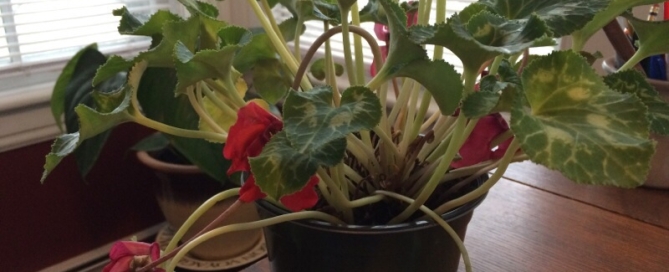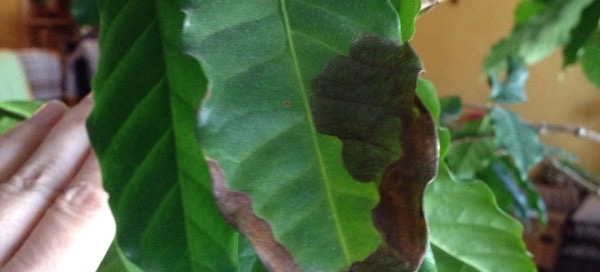Revenea Palm Yellowing
This is a Revenea or majesty palm. When grown in the landscape they can get quite large. They are native to the moist, humid tropics and grow in warm climates out in full sun, which gives you an idea of what they need indoors. In order to do well inside you need to keep the soil in the pot evenly moist but not swampy. When the plant dries out too much in between waterings, it will lose lower leaves first and then the rest of the plant will show dried tips and yellowing leaves.
Your plant could first use a larger pot - use one with drainage holes and a deep saucer underneath. Do not fill the bottom of the pot with rocks or anything other than soil. When you water, water well until the plant drains into the saucer. Let it sit in the saucer of water for up to three hours - if after that time the plant hasn't reabsorbed all the excess water soak it up with an old towel or use a turkey baster to remove it from the saucer. Look to see that all the dirt is moist, not just right around the stems.
Your plant looks like it needs more light as well. These palms do not do well in darker places, but need to be grown near bright windows such as an eastern or western facing exposure. If you have a place outdoors that gets morning sun and afternoon shade, or dappled light through trees, you could put this plant (after repotting) outside at the end of May for the summer and it will be quite happy. Water outdoors (with the pot not in a saucer) every other day.
